Game of Cities
Game of Cities published by E.E Fairchild Co, 1932.
Game of Cities card game was published by E. E. Fairchild Corporation, NY, under their ‘All-Fair’ brand name, in 1932. Seventeen North American cities are represented in sets of three cards each, with the addition of a fictitious city called Taboo, making a total of 54 cards with brief histories of each city printed beneath the images. See the Rules►
A second edition of the game, published in 1945 with only 36 cards, is shown lower down this page.
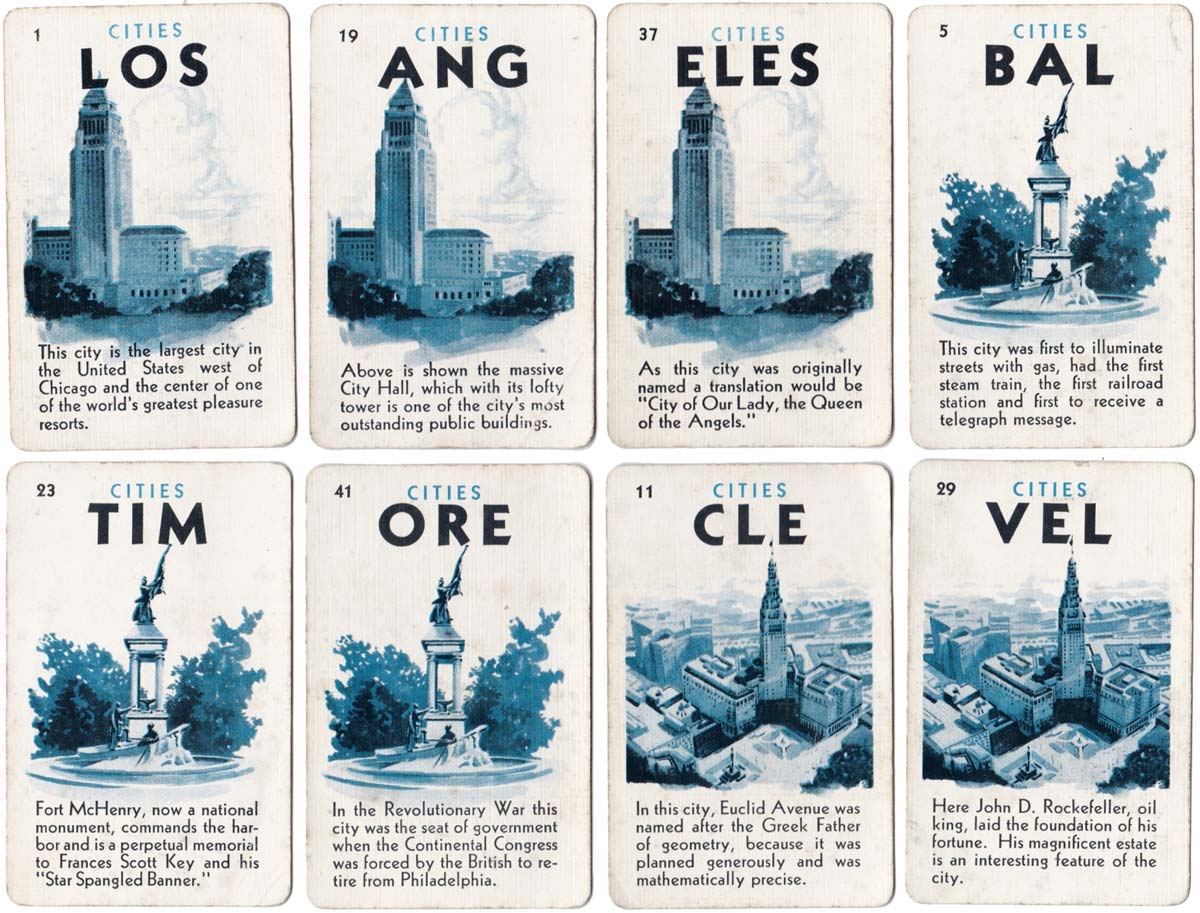
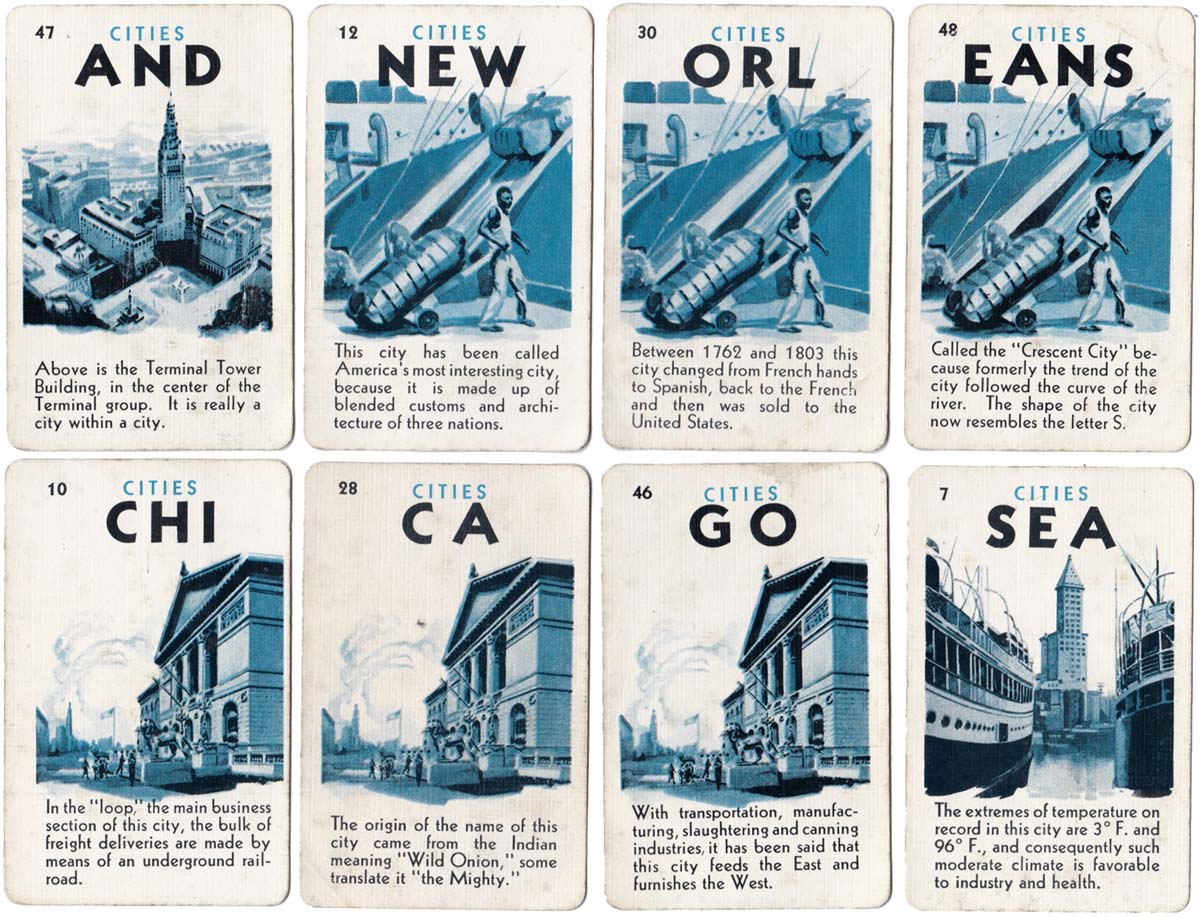

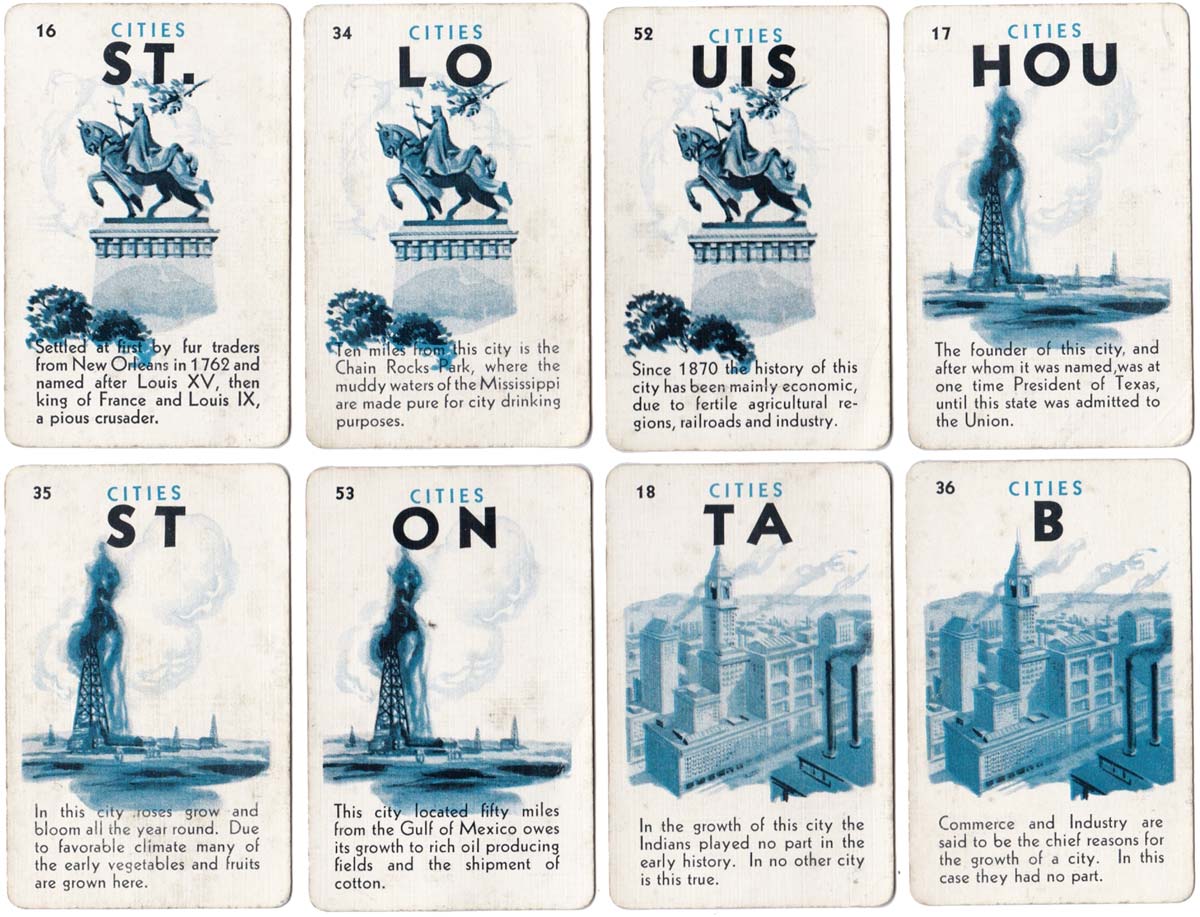

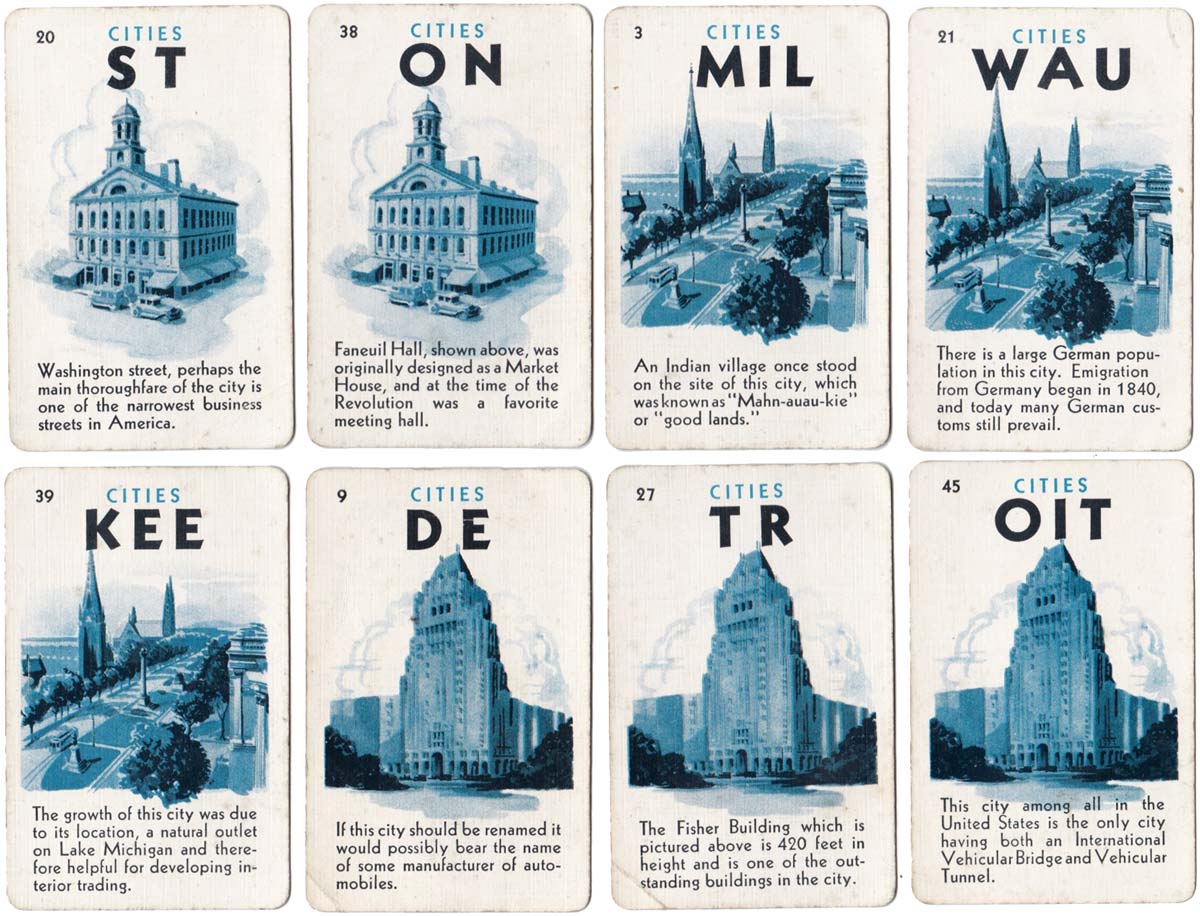
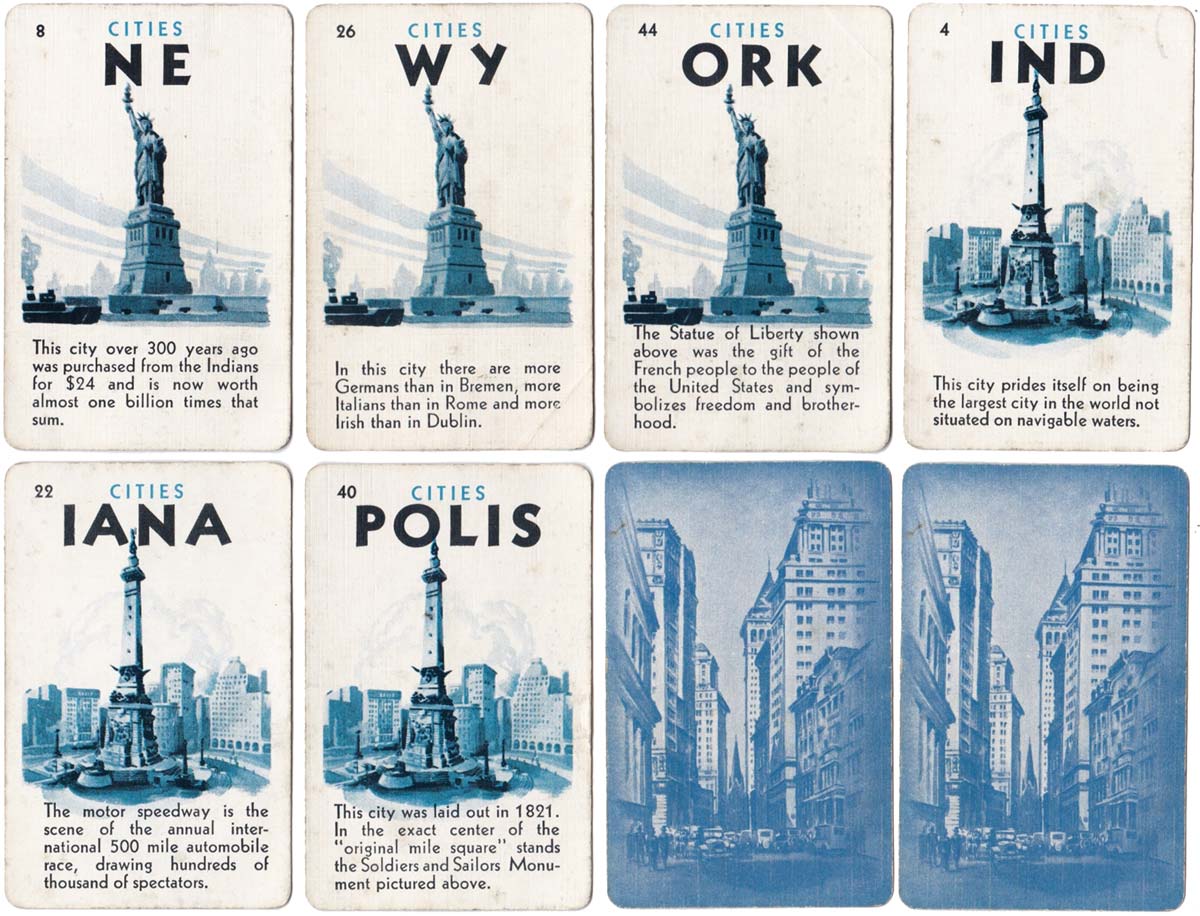
Above: cards from Game of Cities published by E. E. Fairchild Co, 1932. The city of Taboo is fictitious and also a penalty in the game. 54 cards + rules in box.
Second Edition, 1945
A second edition of the game was published in 1945 on lower grade materials, probably due to wartime restrictions. Only twelve cities are represented, making a total of 36 cards, with a new back design. This edition has a different method of scoring in the game. See the Rules►

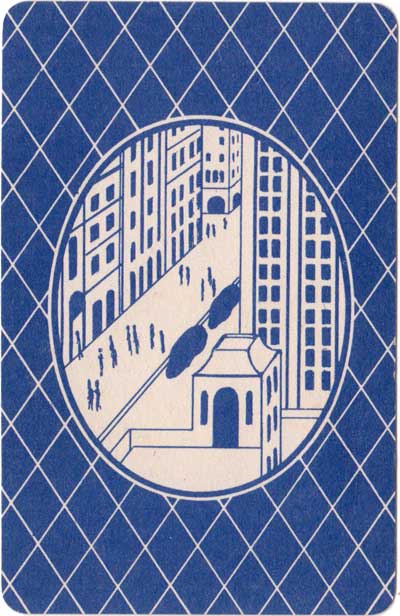
By Rex Pitts (1940-2021)
United Kingdom • Member since January 30, 2009
Rex's main interest was in card games, because, he said, they were cheap and easy to get hold of in his early days of collecting. He is well known for his extensive knowledge of Pepys games and his book is on the bookshelves of many.
His other interest was non-standard playing cards. He also had collections of sheet music, music CDs, models of London buses, London Transport timetables and maps and other objects that intrigued him.
Rex had a chequered career at school. He was expelled twice, on one occasion for smoking! Despite this he trained as a radio engineer and worked for the BBC in the World Service.
Later he moved into sales and worked for a firm that made all kinds of packaging, a job he enjoyed until his retirement. He became an expert on boxes and would always investigate those that held his cards. He could always recognize a box made for Pepys, which were the same as those of Alf Cooke’s Universal Playing Card Company, who printed the card games. This interest changed into an ability to make and mend boxes, which he did with great dexterity. He loved this kind of handicraft work.
His dexterity of hand and eye soon led to his making card games of his own design. He spent hours and hours carefully cutting them out and colouring them by hand.

Leave a Reply
Your Name
Just nowRelated Articles
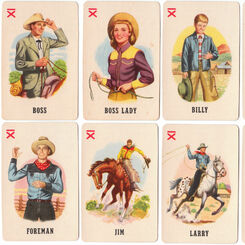
Roundup
Roundup card game by Whitman Publishing, 1951.
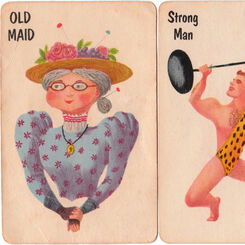
Old Maid
Old Maid card game by Whitman Publishing Co., 1951.
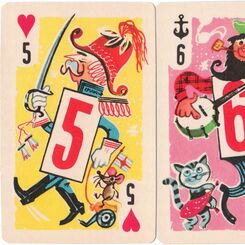
Crazy Eights
Crazy Eights by Whitman Publishing Co., 1951.

Animal Rummy
Animal Rummy by Whitman Publishing Co., 1951.
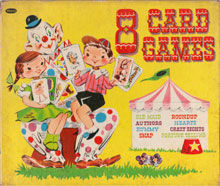
Whitman 8 Game Box
Whitman 8 Card Games boxed set, 1951.
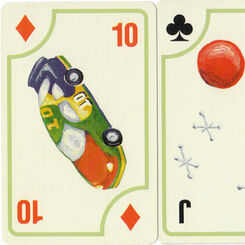
Holiday Games
IE Design Holiday Games, c.1990s.
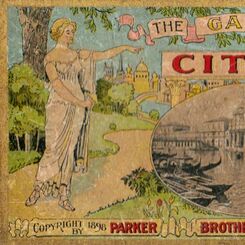
The Game of Cities
The Game of Cities, © 1898 Parker Brothers.
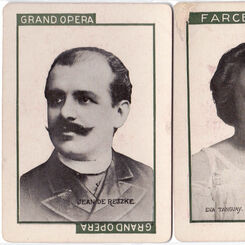
Stage
‘Stage’ card game © 1904 C. M. Clark Publishing Co. Boston, Mass. with portraits of popular actors a...
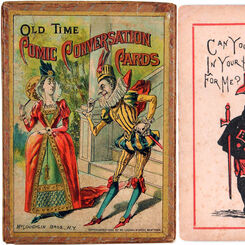
Comic Conversation
Old Time “Comic Conversation” cards published by McLoughlin Bros, N.Y., c.1887.
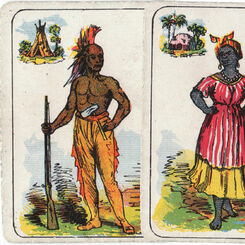
Game of Nations
The “Game of Nations” depicting caricatures of traditional costumes manufactured by McLoughlin Broth...
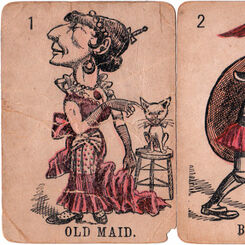
Merry Game of Old Maid
The Merry Game of Old Maid published by McLoughlin Brothers, c.1880s.
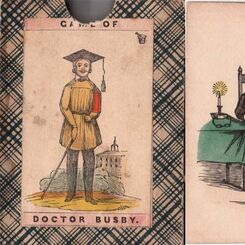
Doctor Busby
“Game of Doctor Busby“- anonymous manufacturer, c.1850.
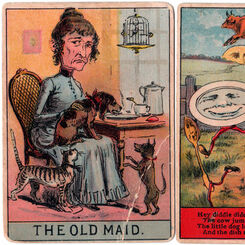
Mother Goose’s Party, or Merry Game of Old Maid
Mother Goose’s Party, or Merry Game of Old Maid, McLoughlin Bros., Inc., USA, 1887.

Parker Brothers
Parker Brothers, Salem, Mass., USA.
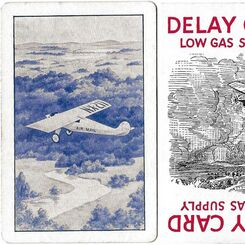
Wings
‘Wings’, the air mail game © 1928 by Parker Brothers Inc.

Space Puzzles
The Space Puzzles Game published by Gametoy Development Co., Inc, Orlando, Fl, 1991.

Space-O
“Space-O” card game published by Pla-Mor Games manufactured by ARRCO Playing Card Co, USA, 1950s,
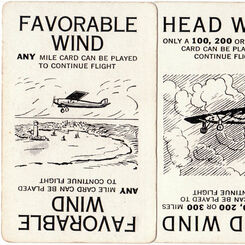
Lindy
‘Lindy’ - the flying game - a sequel to ‘Touring’ by Parker Brothers, 1927.
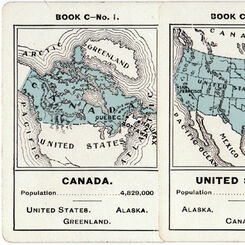
Population
The game of Population was first published by the Fireside Game Co., Cincinnati, USA (a division of ...
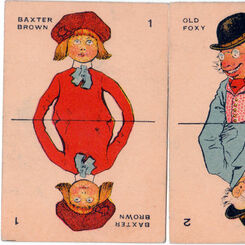
Old Maid
‘Old Maid’ card game manufactured by Milton Bradley Co., Springfield, Massachusetts, USA, c.1920s
Most Popular
Our top articles from the past 60 days


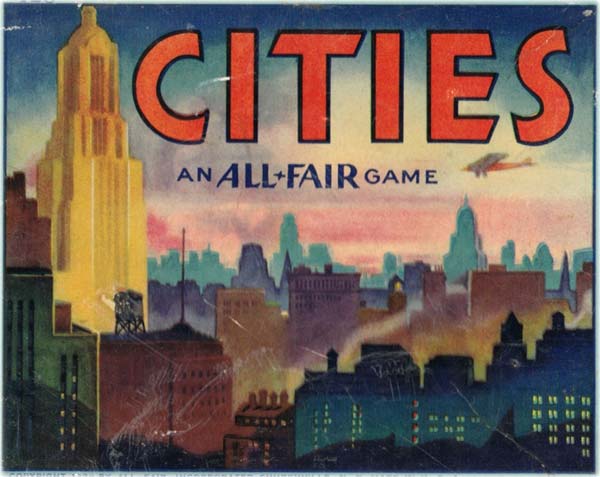
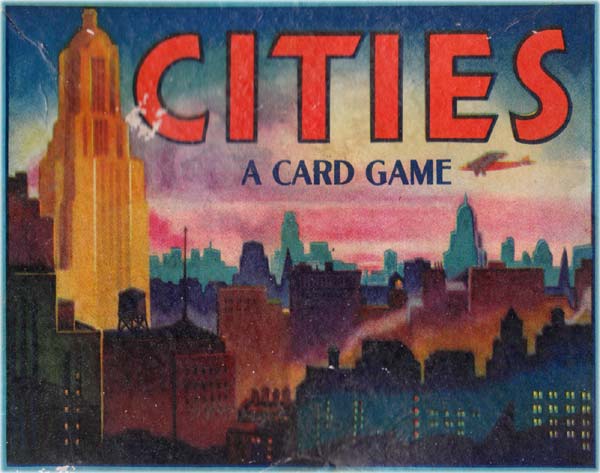
 Your comment here. Your comment here. Your comment here. Your comment here. Your comment here. Your comment here. Your comment here. Your comment here. Your comment here. Your comment here. Your comment here. Your comment here. Your comment here. Your comment here. Your comment here. Your comment here. Your comment here. Your comment here. Your comment here. Your comment here. Your comment here. Your comment here. Your comment here. Your comment here. Your comment here. Your comment here. Your comment here. Your comment here. Your comment here. Your comment here. Your comment here. Your comment here.
Your comment here. Your comment here. Your comment here. Your comment here. Your comment here. Your comment here. Your comment here. Your comment here. Your comment here. Your comment here. Your comment here. Your comment here. Your comment here. Your comment here. Your comment here. Your comment here. Your comment here. Your comment here. Your comment here. Your comment here. Your comment here. Your comment here. Your comment here. Your comment here. Your comment here. Your comment here. Your comment here. Your comment here. Your comment here. Your comment here. Your comment here. Your comment here.




















